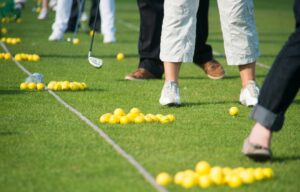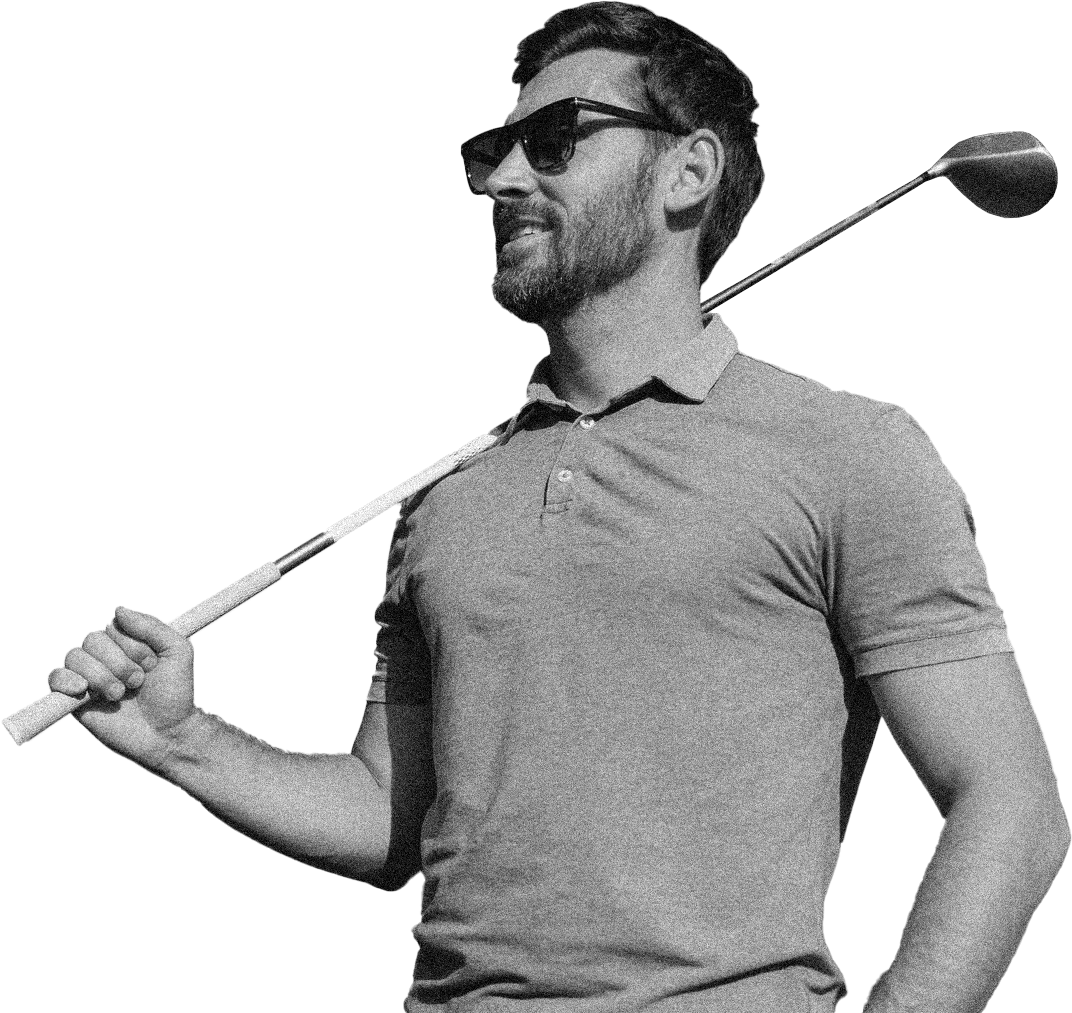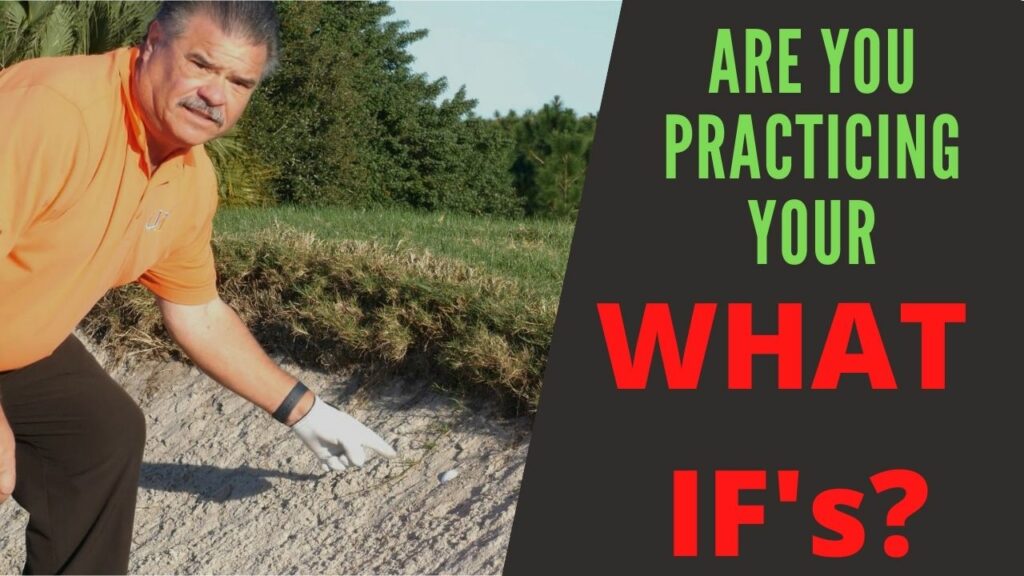Are You Are You Practicing Your “What If’s”?
Practice is only valuable if you are improving. But improving includes more than just practicing with the absolute, most perfect conditions possible. Quite often, 犀利士
you’ll tend to practice from perfect conditions only. Then when faced with a non-perfect condition on the golf course, you fail to perform. Why? Because you failed to spend time practicing your “what If” shots you might face during any round of golf. What if your ball lied in a divot? Or on the cart path? What if your ball was buried in the bunker? Are you practicing your what ifs? If not, it’s time you inconvenience yourself and practice these conditions, so you’re prepared when it happens on the golf course.
What are “What If’s”?
“What if’s” are conditions you face on the golf course that create irregular, awkward, and difficult situations lies and shots. “What If” conditions include tight lies, buried lies, the unexpected lies in leaves or pine straw, or the severe downhill lie you’ve never practiced. Do you think you’d be better prepared when playing golf and faced with that condition if you took 5-minutes during each practice session to focus on only one of these conditions? You bet your would!
It’s the What If’s of your round that typically create the bigger scores on your score card. If you’re not prepared to play these inconvenient conditions, you’ll inevitably go about your decision-making process with less information then you need. And in turn, execute a shot you’re not skilled enough to pull off. It’s the What If’s of each round that determine whether you play well, or just play another round of golf.
How do You Practice Your What If’s?
Most practice areas provide you with a flat, well-conditioned turf condition to practice on. Whether your realize it or not, you create a “What If” condition after you strike the first ball of any practice session on those perfect conditions. That “What If” condition is your divot. Why not place a ball in the middle of the divot and figure a way to hit that shot?
Well groomed practice bunkers provide optimal conditions. Why not throw a ball straight into the sand so it creates a “fried egg” lie? Or why not place a ball in a footprint? Better yet, why not push and partially bury a golf ball into the sidewall of a bunker and learn to play that shot?
When you’re out on the course practicing why not toss a ball into the trees and hit it as it lies?. You can also toss a ball into a high rough within an even lie. Another idea, place a ball in a grass-less barren spot just off the fairway. When playing and score does not matter, why not try these shots?
Practicing your What If shots require you to place the ball in conditions that are not perfect. The less perfect the better. Think about it. How many perfect lies do you experience on the golf course? Unless you’re habitually playing “preferred lies,” you never do.
Practicing What If’s Apply to Your Short Game Too
There are probably more What If shots from around the green than anywhere else on the golf course. Green side bunkers are the obvious What If conditions. Whether the grass is high or cut tight, there’s uneven lie, or there’s a potential pitfall of hazards surrounding a green, you most likely will never face a perfect condition to hit a shot from around the green.
The more creative you make your What If practice sessions from around the green the better. Combining the poor condition of any lie around the green with the green conditions of slope and curvature provide an optimal experience for you to become a better golfer. It’s these What If shots that typically determine the winner of a tour event each weekend. It’s these shots that are most talked about at the 19th hole after your rounds of golf. Why not be the center of conversation after your next round by practicing your What If short game opportunities?
What If Shots are not Always Negative
Most people think of “What If” shots always being negative in nature and conditions. Negative What If’s occur when things are not going your way. Realistically, are experiences in your golf game always going against you? Probably not.
What If shots also exist when things are going well for you during a round of golf. Examples of the positive What If experiences are the rounds you experienced multiple birdie opportunities, more so than normal. Or you were hitting the ball so well, you’re faced shorter approach shot yardages than you normally experience? By the way, how do you manage the pressure of playing well? All these “What If” conditions and situations require you to practice beyond your comfort level and as best as you can.
Positive What If experiences do tend to place more pressure on you. Or should I say, you place more pressure on yourself when experiencing a great day on the golf course? How many times have you found yourself counting your score with 3 holes left to play, experiencing one of your best days on the golf course, only to collapse and fade away the last three holes? This is the most typical positive “What If” experience for most golfers. You’ve got to practice the positive What If situations as much as you do the negative ones. Simulated practice sessions are best to recreate all the positive experiences you could face during a great round of golf, allowing you to experience the pressure you place upon yourself when you’re playing your best.
What If Experiences are Uncomfortable and Inconvenient
Without a doubt, any What If condition or situation, both positive or negative, creates an uncomfortable feeling for you on the golf course. And it also places an inconvenience upon your skill level because of your lack of preparation of learning to handle and deal with these events.
To practice your What If’s requires you to deal with being uncomfortable. It also requires you to make your practice sessions as inconvenient as you can. Inconvenient does not mean time of day or location. It means inconvenienced from hitting shots from non-perfect conditions. It’s OK to schedule your practice at a convenient time, at a convenient location. Beyond that, the more inconvenient you can make your practice sessions, the more uncomfortable you are. The more uncomfortable you are and learn to deal with your discomfort, the more mentally tough you become.
What If Shots Create Mental Toughness
Mental toughness is a prerequisite to enduring the hardships you face on the golf course. Except for the 18 tee shots where you have the ability to make conditions as perfect as possible, all other golf shots result in an inconvenience. An inconvenience and uncomfortable setting from which you must hit your next shot. You cannot blame someone else for your inconvenience and discomfort. You must take ownership of both before you have any chance of reaching potential as a golfer.
By creating inconvenient situations during your practice session, you not only practice a skill that allows you to successfully navigate any inconvenience. You also create an opportunity to create a better decision-making process. In turn, providing you the mental toughness necessary to laugh at any inconveniences you face on the golf course in the future. It won’t matter how inconvenient the shot you’re faced with knowing you have practiced inconveniently within an uncomfortable environment. You’ll have more comfort and control of these inconveniences. Practicing your What If’s goes a long way towards your mental toughness.
Conclusion
Anytime you face adversity within your life, do you view the adversity as an opportunity? Why not have the same attitude on the golf course. Each time you’re faced with a difficult situation or an inconvenient experience of where the golf ball lies, wouldn’t it be great to view that as a positive opportunity to showcase who you are as a golfer? That’s the attitude world class players take when faced with adversity. And practicing your What If’s will help the attitude.
Sometimes you only get one opportunity at something. And that one opportunity on the golf course may make the difference between you winning and losing a tournament. It may make the difference between you making a cut in a competitive tournament. That opportunity may be the difference between you winning or losing your weekly match with your playing companions. Are you capitalizing on your opportunities? Practicing your What If’s is one of the best ways to capitalize your opportunities.
Why not start taking an inventory of your most typical “What If” situation on the course and make a resolution of practicing your What If’s more often before the new golf season rolls along?






